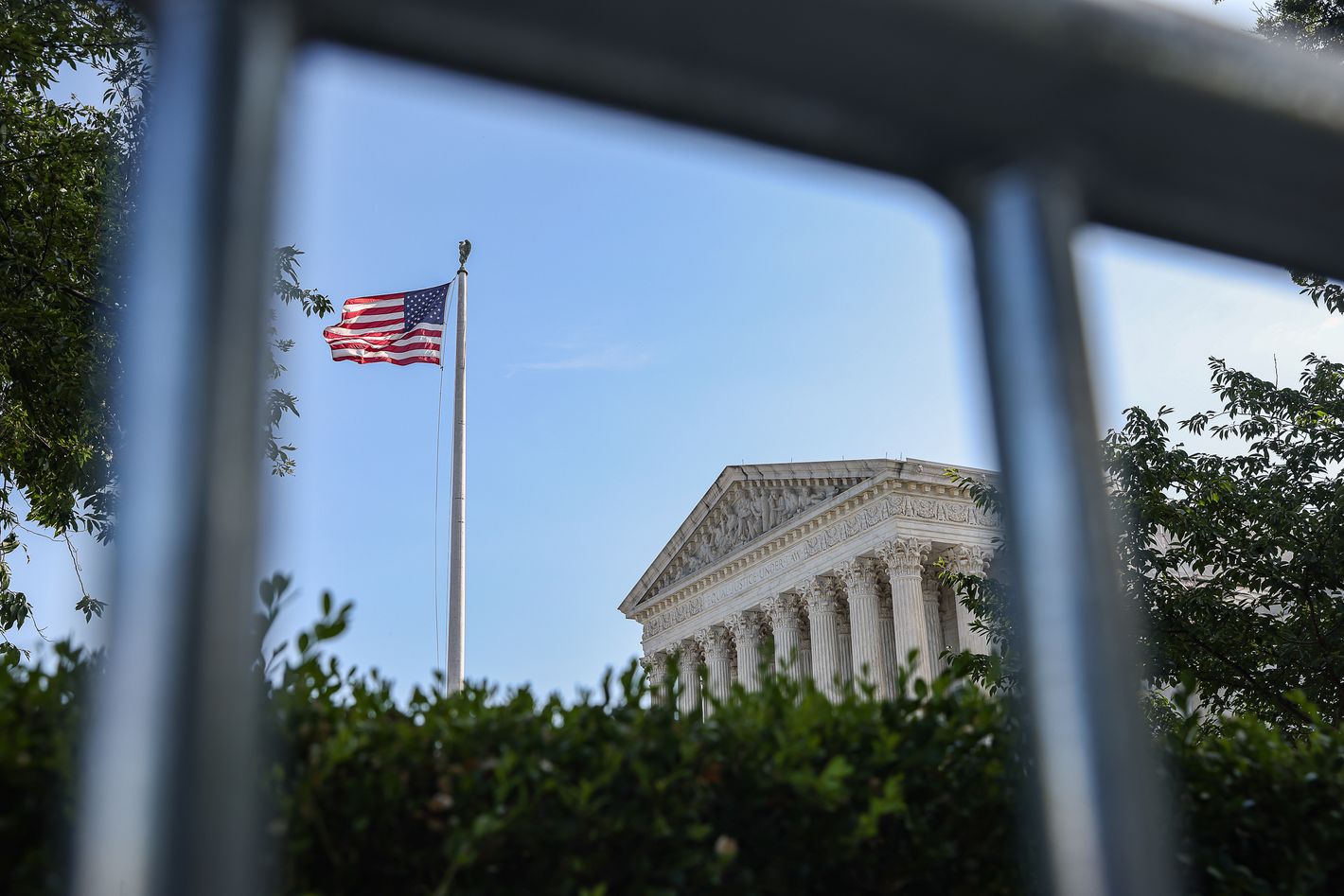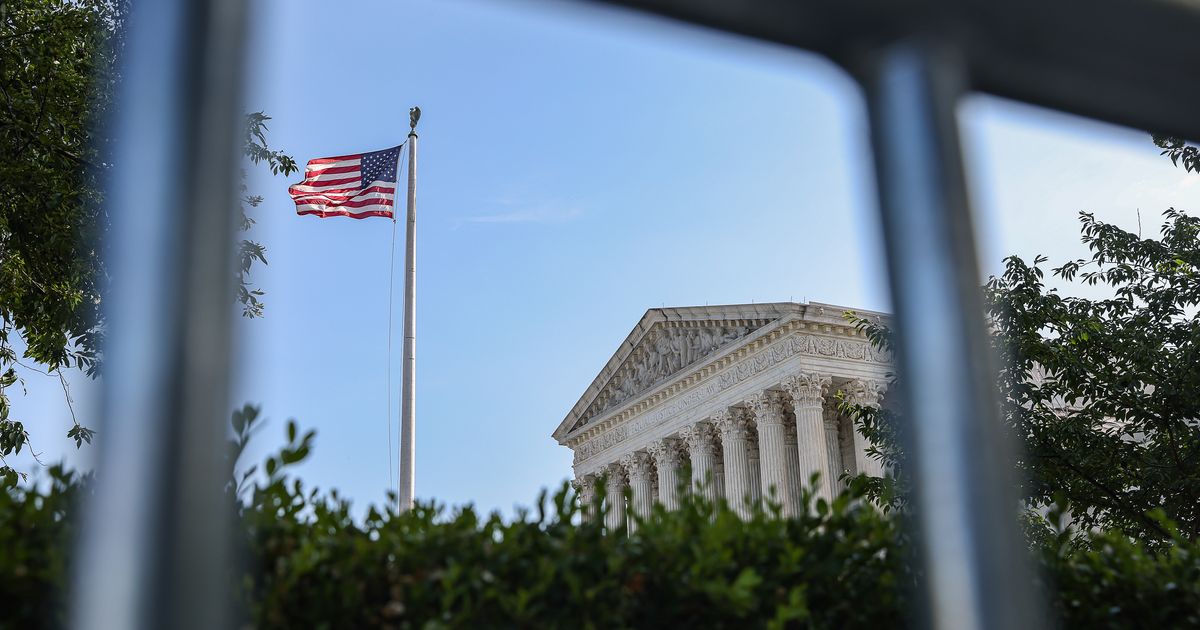 Photo: Valerie Plesch/Bloomberg/Getty Images
Photo: Valerie Plesch/Bloomberg/Getty Images
One year ago, the Supreme Court recognized criminal immunity for the sitting president. But when it comes to the systematic expansion of executive power, Friday’s ruling — which severely curtails the power of federal district courts to issue nationwide injunctions — dwarfs the immunity decision. Immunity applied narrowly to protect Donald Trump (and his successors) from criminal prosecution; that’s a big deal, for sure. But the court’s opinion in Trump v. CASA alters the fundamental balance of power between the president and the judiciary, across the board.
There’s a lot — so much — we don’t know about how today’s ruling will play out in the federal district courts and in the real world. Rest assured there will be mayhem on both fronts. But we do know that our political system has changed permanently.
Let’s start with brass tacks: Federal district court (trial-level) judges can no longer block the president’s executive actions on a nationwide basis, with only rare (and ill-defined) exceptions. The majority opinion, authored by Justice Amy Coney Barrett, recalibrates the role of the courts in relation to the executive branch. As Barrett writes, “Some say that the universal injunction ‘gives the Judiciary a powerful tool to check the Executive Branch.’ But federal courts do not exercise general oversight of the Executive Branch; they resolve cases and controversies consistent with the authority Congress has given them. When a court concludes that the Executive Branch has acted unlawfully, the answer is not for the court to exceed its power, too.”
Trump is the immediate victor here. He quickly took to the podium to declare that the Supreme Court’s ruling broke the judicial shackles that had been placed on all manner of presidential initiatives, from immigration enforcement to firings of federal employees to withholding of federal funding. (The actual case that brought the nationwide injunctions issue to the Supreme Court, Trump’s effort to narrow birthright citizenship, remains unresolved on the merits. I still expect him to lose that one, eventually.)
But the Supreme Court’s decision is about the presidency more than the current president or any particular chief executive. Objections to nationwide injunctions cross party lines; whoever is in the White House at any given moment hates them. The Obama and Biden administrations opposed nationwide injunctions that blocked several of their key executive initiatives, from Biden’s student-loan program to Obama’s path-to-citizenship initiatives. In fact, the Biden administration specifically argued in the courts against nationwide injunctions — raising the same core arguments made by the Trump administration here — but never obtained a conclusive Supreme Court ruling.
While the outcome is surely a win for Trump, he and his top brass have overstated the decision by claiming that district courts can no longer stop presidential action at all. In fact, district courts still have the power to block presidential initiatives with respect to the actual parties in any given lawsuit, and potentially more broadly (if, for example, a state seeks relief as a party). Indeed, Justices Clarence Thomas, Samuel Alito, and Neil Gorsuch issued concurring opinions because they did not believe the Court went far enough and should have barred nationwide injunctions even more definitively than it did.
This was a rough day for office morale at the Supreme Court. Chief Justice John Roberts has strained to foster a kumbaya environment among the justices, and this term offered its share of rulings involving heartwarming cross-ideological alliances. But when the big one hit today, it was right back to the old six-to-three split: Republican-appointed conservatives versus Democratic-appointed liberals. (Two other major final-day Supreme Court decisions, on religious freedom regarding LGBTQ-themed content in elementary schools and regulation of pornographic websites, also broke by the same six-to-three divide.)
So what happens next?
I’d expect to see a rush to the courthouse doors as people who may be harmed by Trump’s policies come to realize that they cannot free-ride on broad-based judicial declarations in favor of other plaintiffs. The new rule, boiled down, is that courts can rule only as to the actual parties to any given lawsuit; if you want relief, your name needs to be on the case caption. (Relatedly, I’d expect to see a rash of class actions, which enable large groups of similarly situated plaintiffs to join the same lawsuit, though it’s often easier said than done, as judges apply exacting criteria before green-lighting such broad-based cases.)
The Court’s ruling will also ratchet up pressure on courts of appeals, including the Supreme Court itself, to consider cases with nationwide implications more quickly. As the dissenters note, certain issues demand uniformity. How can it be, for example, that a child born to noncitizen parents in one federal district might have different citizenship status than a child born under identical circumstances, only ten miles away, in another federal district? The issue demands a uniform nationwide resolution, and only the Supreme Court can provide such certainty and finality.
While the Court’s decision is undoubtedly a landscape-shifter, some of the doomsaying is overblown. Justice Ketanji Brown Jackson warns in dissent that “if judges must allow the Executive to act unlawfully in some circumstances, as the Court concludes today, executive lawlessness will flourish, and from there, it is not difficult to predict how this all ends. Eventually, executive power will become completely uncontainable, and our beloved constitutional Republic will be no more.”
How, then, did we manage to survive as a nation for over 200 years until nationwide injunctions proliferated in the early 2000s? No doubt, our new legal reality will be confusing, and messy, and perplexing. The president and the presidency are now substantially more powerful than they were 24 hours ago. And while it’s the end of unilateral, nationwide exercises of power by district court judges, it’s not the end of the republic.
From Intelligencer - Daily News, Politics, Business, and Tech via this RSS feed


